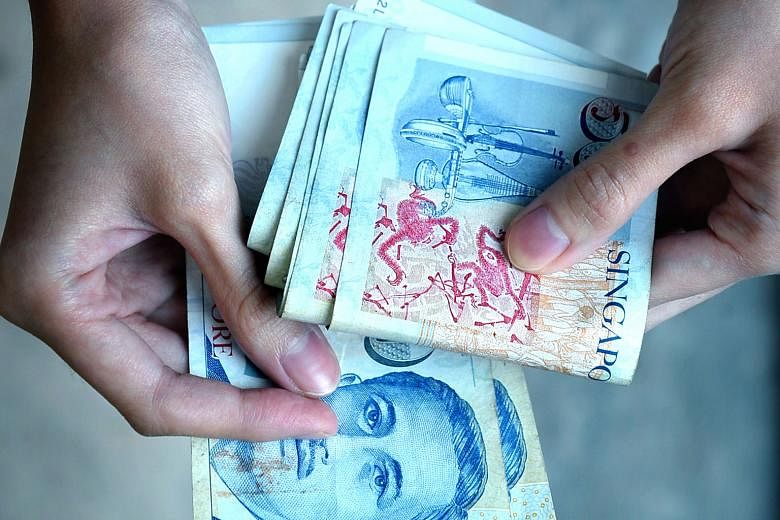The Singapore dollar is expected to weaken against key regional currencies like the ringgit this year as economic growth here slows.
Analysts say the recent move by the central bank to stop the Singdollar from rising further against a basket of currencies will also weigh on its performance in the coming months.
The Singdollar has been the third-best-performing regional currency against the greenback so far this year but it is unlikely to maintain its position, said Mr Sim Moh Siong, a senior currency strategist at the Bank of Singapore.
"It's likely to drop in the rankings from one of the best performing to one of the laggards," he added.
This comes amid a subdued outlook for Singapore's economic growth this year on the back of tepid global demand.
A surprise move by the Monetary Authority of Singapore on April 14 to set the rate of the dollar's appreciation to zero per cent underscored the economy's bleak prospects, and will also put a lid on the Singdollar's strength relative to its regional peers, analysts said.
There are also external factors weighing on the Singdollar this year.
Credit Suisse senior foreign exchange strategist Heng Koon How noted that the United States Federal Reserve is expected to resume raising interest rates in the second half of the year.
This is seen as a plus for the greenback but will likely have a negative effect on Asian currencies like the Singdollar as investors move out of the region and into the US.
Still, analysts expect some regional currencies to do better relative to the Singdollar this year. In particular, the ringgit is on track for a stronger year after plumbing multi- year lows against the Singdollar last year. The Malaysian currency has appreciated almost 5 per cent against the Singdollar since January - one Singdollar can now buy about RM2.90, from about RM3.05 four months ago.
Mr Sim noted that oil prices appear to be bottoming out and "could be moderately higher by year end". This would help lift expectations for the ringgit as Malaysia is a major oil exporter.
Another currency that has staged an aggressive comeback is the Australian dollar, which has gained on the back of strong labour market conditions and a rebound in iron ore prices, said Phillip Futures foreign exchange strategist Bryan Lum.
One Australian dollar could buy about S$1.014 in January. It can now buy about S$1.047, a gain of 3 per cent.
The Australian dollar is set to remain strong in the short run, with its longer-term outlook dependent on improvements in the Chinese economy, added Mr Lum.
Meanwhile, the Japanese yen has also strengthened considerably against the Singdollar this year. One Singdollar was worth about 87 yen in December but can now buy about 82 yen.
The yen is likely to stay strong against the Singapore dollar in the short term but its longer-term outlook is a "difficult call", said Mr Sim.
The currency has strengthened not because the Japanese economy is doing well, but because investors see the yen as a safe haven against volatility, he noted.
The prospect of further US Fed interest rate hikes could create more market volatility and drive up demand for the yen. However, Japanese officials have expressed discomfort with the strong currency and might move to ease its rise.


